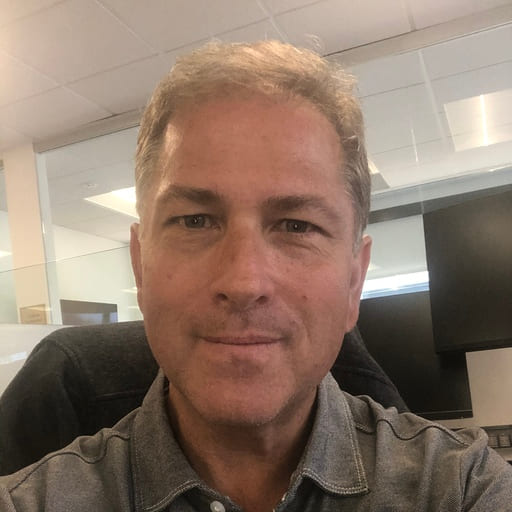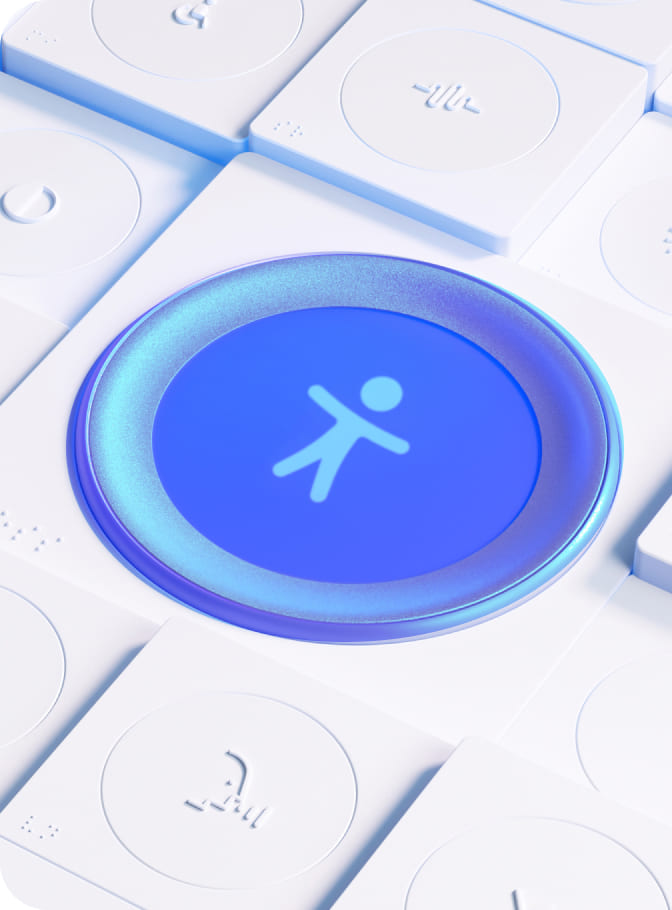Augmentative and alternative communication: when tech meets talk

Imagine a world where you had no voice but needed to express yourself or if you had a voice but no one could hear you. How would you get your message across? For many individuals, this is no hypothetical scenario; it’s a daily reality. It’s also where Augmentative and Alternative Communication, (or AAC) plays a huge role.
In this piece, we’ll explain what augmentative and alternative communication is and how it offers new pathways for people grappling with speech and language impairments. We’ll also provide insights on AAC communication devices and ways they can be used to break down existing communication barriers.
What is augmentative and alternative communication (ACC)?
Augmentative and alternative communication, commonly known as AAC, refers to methods and tools used to assist individuals who have difficulty with verbal speech. These methods can be either supplemental, augmenting natural speech, or alternative, providing a primary means of communication for people who are unable to speak.
The goal of AAC is to enable individuals to express their needs, thoughts, and emotions effectively, enhancing their ability to interact with others and participate in daily activities.
Did you know? The global market for AAC Device estimated at USD million in the year 2022, is projected to reach a revised size of USD million by 2030.
AAC: communication strategies used by all
We all engage in AAC without even realizing it. Every time you give a thumbs-up, scribble a quick note for somebody or share a glance across a crowded room, you’re using forms of AAC.
AAC uses a diverse array of techniques and tools to help people express their thoughts, feelings, and ideas. This includes everything from:
– Manual signs and gestures
– Finger spelling
– Using tangible objects
– Line drawings
– Picture communication boards and letter boards
– Speech-generating devices
These tools and techniques open up new ways to communicate for people who need them, improving the way they connect with the world.
Who qualifies for AAC?
Anyone with significant speech or language difficulties that impair their ability to communicate effectively can qualify for AAC. This includes individuals with conditions such as:
- Autism
- Cerebral palsy
- Down syndrome
- Stroke
- Traumatic brain injury
- Other developmental or acquired disorders
AAC can benefit both children and adults who need alternative methods to express themselves and interact with others.
How can AAC help individuals with a disability?
AAC offers a multimodal approach to communication support for individuals whose disabilities impair their ability to communicate verbally. This range of tools and strategies enables more effective expression and interaction across different settings. Here’s a breakdown of some of the ways AAC supports individuals with different disabilities:
Autism: AAC, particularly through the use of augmentative communication devices for autism, can significantly benefit autistic individuals by providing alternative ways to communicate. This reduces frustration and enhances their ability to express thoughts, needs, and emotions. Such support can improve social interactions and foster independence.
Cerebral palsy: AAC helps those with cerebral palsy by compensating for speech and motor limitations, allowing clearer communication and more effective interaction with others, enhancing learning and social participation.
Down syndrome: AAC supports individuals with Down syndrome by improving clarity of communication, facilitating language development, and boosting confidence in social interactions.
Stroke: For stroke survivors, AAC aids in overcoming speech and language difficulties, offering alternative communication methods which can accelerate rehabilitation and help regain independence.
Traumatic brain injury: AAC provides essential communication strategies for those with traumatic brain injury, assisting in re-establishing communication abilities and supporting recovery by enabling expression of needs and thoughts.
What is an example of AAC?
There are many AAC device examples, but let’s focus on a fictional scenario. Here’s the story of Liam, a young boy with cerebral palsy. This is a condition that affects his ability to speak clearly.
Traditional verbal communication is challenging for Liam, making it difficult to convey his needs and desires. To aid his communication, Liam uses a speech-generating device, a high-tech AAC tool. This device has a touch screen with various icons representing words and phrases. When Liam taps an icon, the device converts his selection into spoken words.
For instance, when Liam wants to ask for a drink, he can tap on the icon representing “drink,” and the device will say, “Can I have a drink, please?” This not only helps Liam communicate his needs effectively but also allows him to interact more naturally with his peers and caregivers.
Another example is how AAC is used for autism. Take Maya, a teenager with autism who struggles with verbal communication. To facilitate her interaction with the world around her, Maya participates in AAC communication therapy using a tablet equipped with communication software. This tool allows her to select pictures and symbols that are then converted into speech, helping her to convey her thoughts and feelings and engage more fully in conversations.
By utilizing AAC devices for speech, people are liberated to overcome communication barriers, gaining greater independence, and improving their quality of life.
Did you know? Beukelman and Light (2020) estimated that approximately 5 million Americans and 97 million people in the world may benefit from AAC.
Communication unlocked: a simple guide to AAC
When it comes to improving communication for individuals with speech and language challenges, augmentative and alternative communication (AAC) offers two key types of solutions. Each type provides unique ways to help users express themselves, whether through simple gestures or advanced technology.
Let’s take a look at these two fascinating categories and discover how they can transform communication.
What are the two types of AAC?
AAC is typically divided into two broad categories: unaided and aided.
Unaided AAC
Unaided AAC methods do not require any external tools but do require some degree of motor control. These methods include:
- Body language
- Facial expressions
- Finger spelling
- Gestures
- Manual signs
- Vocalizations
- Verbalizations
Aided AAC
Aided AAC methods involve some form of external tool, which can be either electronic or non-electronic. These are further divided into:
Low-tech/light-tech options
These non-electronic tools are often simple and portable. Examples include:
- Communication boards/books
- Objects
- Pictures
- Photographs
- Visual schedules
- Writing
High-tech options
These electronic tools often offer advanced features. Examples include:
- Computers, tablets, or smartphones
- Communication apps, including AAC software with dynamic symbol-based communication
- Text-to-speech features
- Texting
- Drawing/writing using a tablet
- Single-message devices and recordable/digitized devices
- Speech-generating devices (SGDs)
An individual may use one form of AAC alone or a combination of unaided, low-tech, and high-tech AAC methods to best meet their communication needs. Overall, whatever method an individual uses, it’s essential that people who use AAC always have access to their digital communication tools or devices to ensure they can communicate effectively at all times.
How do AAC devices work?
AAC assistive communication devices are revolutionizing how individuals with speech and language impairments interact with the world. But what makes these devices so transformative?
The power of AAC devices is how they combine advanced technology with user-centered design. They utilize a variety of input methods – touch screens, switches, and even eye-tracking technology – to allow users to select symbols, words, and phrases that are then converted into spoken text or speech. This enables seamless communication for those facing physical or cognitive challenges.
Customization is vital with AAC devices. Users can tailor vocabulary sets, switch languages, and tweak accessibility settings to meet their specific needs, whether they have visual, auditory, or motor impairments. This personalization makes each device as effective and user-friendly as possible.
AAC devices are more than just technological solutions; they are lifelines that empower individuals and ensure that every voice is heard.
What is the future of speech and language AAC therapy?
There’s a noticeable gap between the demand for speech and language therapists and the available supply. As our population grows and ages, this need is only set to increase. Additionally, with the rise of conditions such as Alzheimer’s and other forms of dementia, especially prevalent in older adults, the demand for specialized AAC communication interventions by speech-language pathologists (SLPs) is becoming more urgent.
Here’s where it gets interesting: how do we bridge the gap when there simply aren’t enough SLPs to go around? Enter text-to-speech devices and other innovative assistive technologies. These tools are transforming the landscape of therapy itself. But can technology keep up with the demand? And more importantly, how do we ensure that it complements the human touch rather than replaces it?
The future of speech and language therapy could very well hinge on our ability to integrate cutting-edge tech with compassionate care. Could the next breakthrough in text-to-speech devices offer more personalized and effective treatments? Only time will tell, but one thing’s for sure: the intersection of technology and human expertise could lead to some exciting developments in the field of AAC therapy.
Did you know? Speech-language pathologists face significant barriers in providing AAC services, due to gaps in knowledge and skills. Despite these challenges, 1%-25% of weekly patient caseloads require AAC for effective communication.
UserWay: breaking communication barriers
Communication is a basic human right, and for those with speech challenges, augmentative and alternative communication (AAC) opens up essential avenues for expression. AAC is just part of what UserWay brings to the table, offering a full suite of accessibility tools. From our handy Accessibility Widget to continuous monitoring, explore how people of all abilities, ages, and backgrounds can benefit. Curious to learn more? Why not chat with a UserWay expert today?
For guidance, talk to a UserWay expert today.
FAQS
What types of AAC devices are available?
AAC devices range from simple picture boards to sophisticated speech-generating devices that can be customized to the user’s needs, ensuring that each individual has the tools to communicate effectively.
Can AAC be used by children and adults?
Yes, AAC systems are versatile and can be adapted for users of all ages, from young children who are just beginning to communicate to older adults who may have lost the ability to speak due to illness or injury.
How can an accessibility expert support AAC?
Consulting with an accessibility expert can tailor the AAC system to fit the unique needs of the individual, ensuring it is user-friendly and maximizes their ability to communicate effectively. Experts can also provide training and support to help users and their caregivers make the most of the technology.




Share